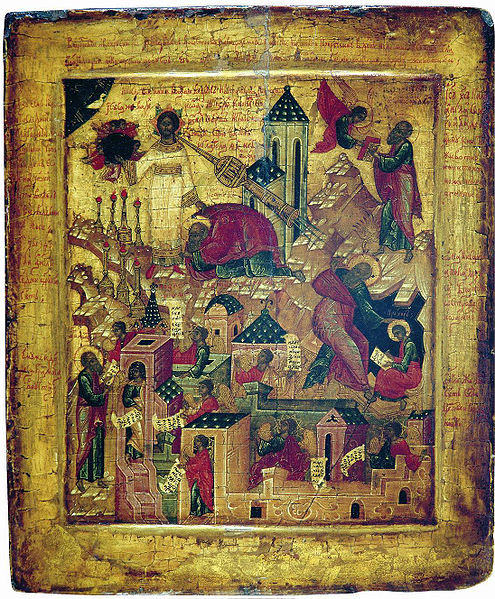Ven Espíritu Santo que
enviará el Padre en mi nombre, será quien os lo enseñe todo y os vaya
recordando todo lo que os he dicho. Esta es la promesa de Jesús.
Del Espíritu no habría que hablar mucho, es mejor desearlo, esperarlo en oración, invocarlo
y dejarnos penetrar, reanimar y conducir por Él.
¡Ven Espíritu Santo! sin Ti, nuestra lucha por la vida termina sembrando muerte, nuestros
esfuerzos por encontrar felicidad acaban en egoísmo amargo e insatisfecho.
¡Ven Espíritu Santo! Sin Ti, nuestro "progreso" no nos conduce hacia una vida más
digna, noble y gozosa. Sin Ti, no habrá nunca un pueblo unido sino un pueblo
constantemente vencido por divisiones, rupturas y enfrentamientos. Sin Ti,
seguiremos dividiendo y separándolo todo: Norte y Sur, bloque occidental y
oriental, primer mundo y tercer mundo, izquierdas y derechas, creyentes y
ateos, hombres y mujeres. Recuérdanos que todos venimos de las entrañas de un
mismo Padre y todos estamos llamados a la comunión gozosa y feliz en El.
¡Ven Espíritu Santo! Renueva nuestro amor al mundo y a las cosas. Enséñanos a cuidar esta tierra
que nos has regalado como casa de todos donde pueda crecer la familia humana.
Sin Ti nos la seguiremos disputando agresivamente, buscaremos cada uno nuestra
«propiedad privada» y la iremos haciendo cada vez más inhóspita e inhabitable.
¡Ven Espíritu Santo! Enséñanos a entendernos aunque hablemos lenguajes diferentes. Si tu Ley
interior de Amor no nos habita, seguiremos la escalada de la violencia absurda
y sin salida.
¡Ven Espíritu Santo! y enséñanos a creer. Sin tu aliento, nuestra fe se convierte en ideología
de derechas o de izquierdas, nuestra religión en triste seguro de vida eterna
que se va marcando en una inútil hojita
de normas. Condúcenos al evangelio y ayúdanos a alimentarnos de él y sólo
de él.
¡Ven Espíritu Santo! y enséñanos a orar. Sin tu calor y tu fuerza, nuestra liturgia se pierde en
rutina, nuestro culto en rito legalista, nuestra plegaria en palabrería. Ven a
mantener dentro de la Iglesia el esfuerzo de conversión. Sin tu impulso, toda
renovación termina en anarquía, involución, cansancio o desilusión. Ven a
alegrar nuestro mundo tan sombrío. Ayúdanos a imaginar lo mejor y más humano.
Ábrenos a un futuro más fraterno, limpio y solidario. Enséñanos a pensar lo
todavía no pensado y construir lo todavía no trabajado. Entra hasta el fondo de nuestras almas. Mira el vacío del hombre si Tú
le faltas por dentro. Mira el poder del pecado cuando Tú no envías tu aliento.
Ven Señor y dador de vida. Pon en los hombres gozo,
fuerza y consuelo, en sus grandes y pequeñas decisiones, en sus miedos, luchas,
esperanzas y temores.
¡Ven Espíritu Santo! y enséñanos a creer en Ti como ternura y proximidad personal de Dios a los
hombres, como fuerza y poder de gracia que puede conquistar nuestro interior y
dar vida a nuestra vida ■






















